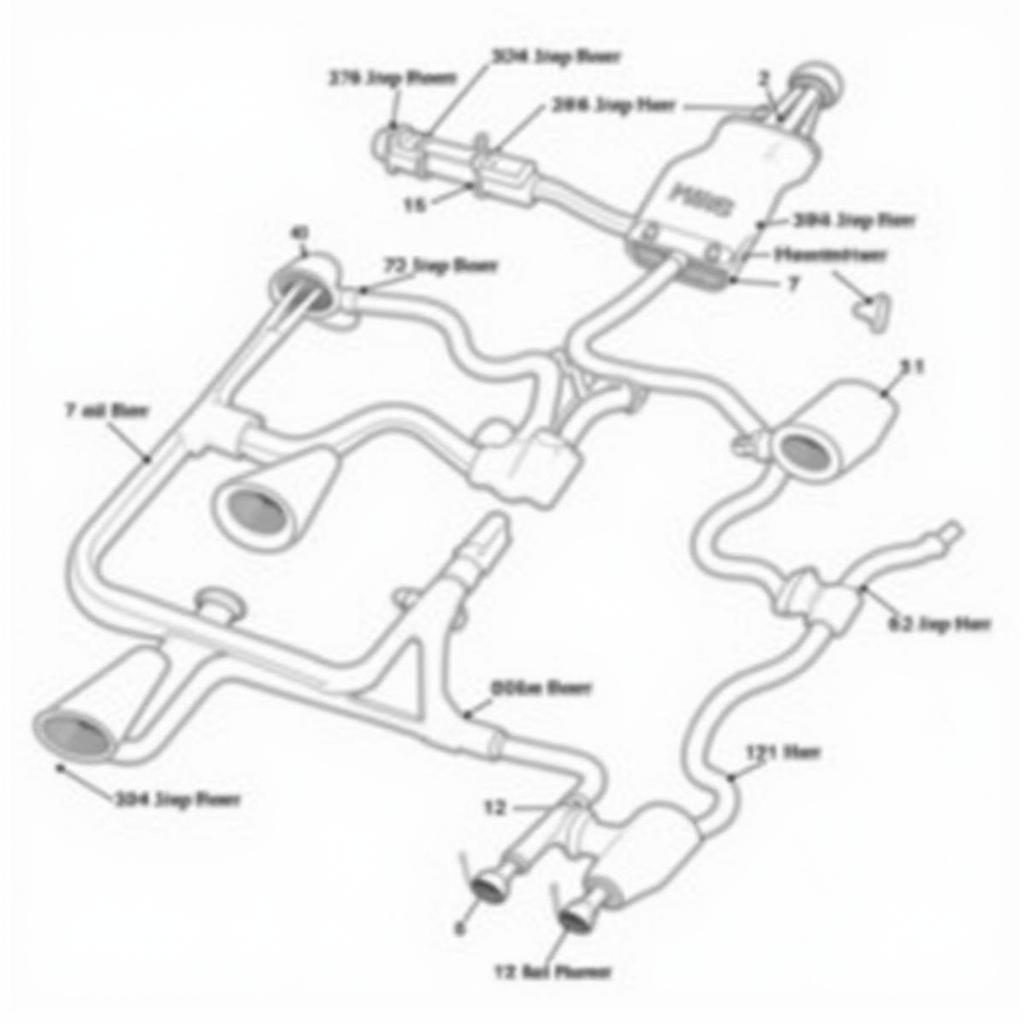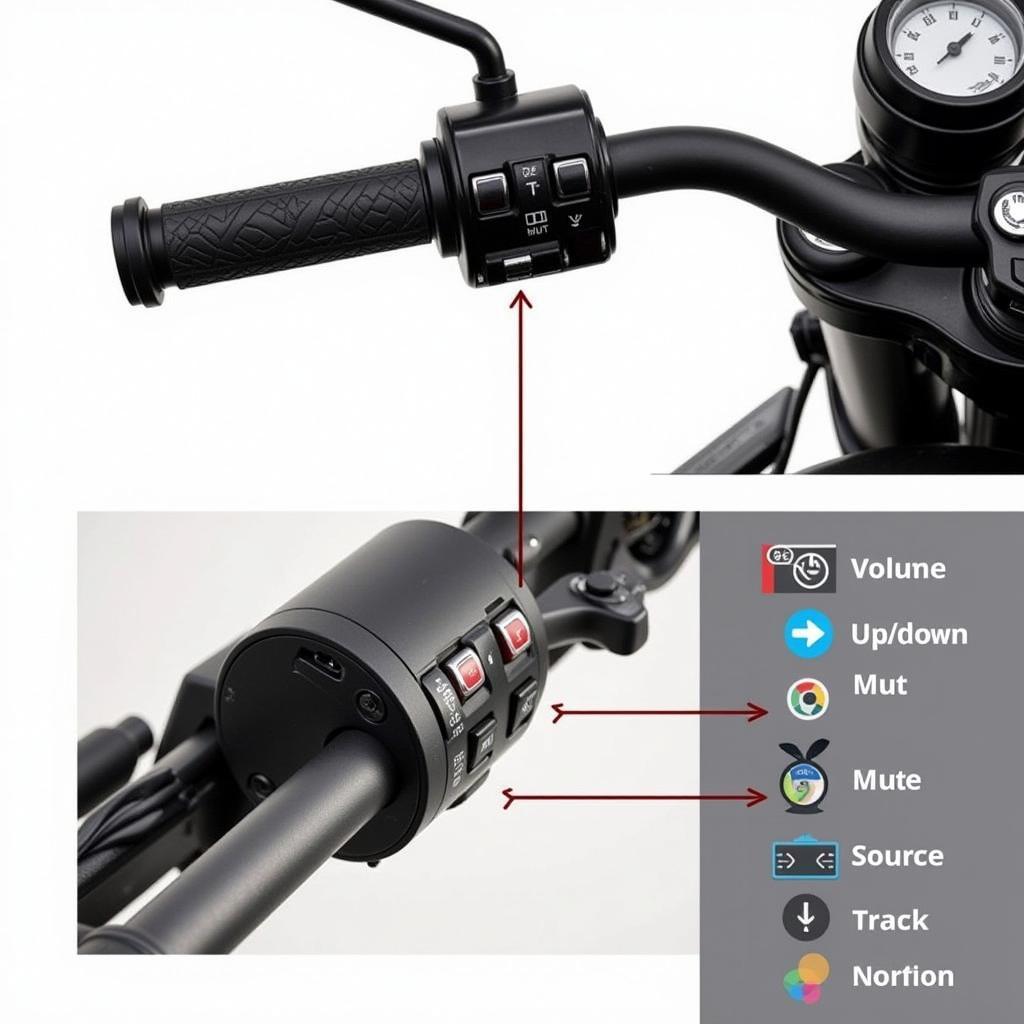The 2006 BMW M6 sound is often described as a symphony of mechanical prowess, a harmonious blend of power and precision. But what makes this particular model’s sound so unique, and what are the common issues that can affect it? This article dives deep into the auditory world of the 2006 BMW M6, exploring its iconic engine note, potential problems, and how to maintain its sonic signature.
Understanding the 2006 BMW M6 Engine’s Roar
The heart of the 2006 BMW M6’s distinct sound lies within its S85 V10 engine. This naturally aspirated 5.0-liter powerhouse produces an unforgettable high-pitched wail as it revs towards its 8,250 rpm redline. Unlike turbocharged or supercharged engines, the naturally aspirated design allows for a more linear power delivery and a purer, unmuffled sound. This is further enhanced by the M6’s exhaust system, specifically tuned to amplify the engine’s natural harmonics.
The engine’s unique firing order also contributes to the signature sound. The V10 configuration allows for a distinctive cadence that sets it apart from other engine types. This rhythmic pulse, combined with the high-revving nature of the engine, creates a truly exhilarating auditory experience.
Common 2006 BMW M6 Sound Issues
While the 2006 BMW M6 engine is known for its incredible sound, certain issues can disrupt this harmonious experience. These problems can range from minor annoyances to more serious mechanical failures. One common issue is exhaust leaks, which can create a hissing or rattling sound, diminishing the engine’s intended melody.
 Diagram of 2006 BMW M6 Exhaust System
Diagram of 2006 BMW M6 Exhaust System
Another potential problem is a failing throttle actuator. This can lead to a rough idle and unusual engine noises. A malfunctioning VANOS system, which controls the variable valve timing, can also impact the engine’s performance and sound, potentially causing a rattling or ticking noise. Finally, worn-out rod bearings can lead to a knocking sound, indicating a serious engine problem that requires immediate attention.
Maintaining the Iconic Sound of Your 2006 BMW M6
Preserving the unique sound of your 2006 BMW M6 requires regular maintenance and attentive care. Regular oil changes with the correct viscosity are crucial for maintaining engine health and performance, directly impacting its sound. Inspecting the exhaust system for leaks and addressing any issues promptly can prevent further damage and ensure the engine’s note remains pure.
Additionally, addressing any issues with the throttle actuators, VANOS system, or rod bearings as soon as they arise is vital. Early detection and repair can prevent further damage and maintain the integrity of the engine’s sound. Regularly scheduled inspections by a qualified BMW specialist can help identify potential problems before they escalate.
Conclusion
The 2006 BMW M6 sound is a testament to the engineering prowess of BMW, a unique blend of power and precision. Understanding the source of this sound, potential issues, and proper maintenance practices are crucial for preserving this sonic masterpiece. By addressing these aspects proactively, owners can ensure their M6 continues to deliver an exhilarating driving experience for years to come.
FAQ
- What type of engine does the 2006 BMW M6 have? A 5.0-liter V10 engine.
- What is the VANOS system? It controls the variable valve timing.
- What is a common sound issue with the M6? Exhaust leaks.
- How can I maintain the M6’s engine sound? Regular maintenance and inspections.
- What can cause a knocking sound in the engine? Worn-out rod bearings.
- What does a failing throttle actuator sound like? Rough idle and unusual noises.
- How often should I change the oil in my M6? Consult your owner’s manual.
Need Further Assistance with Your 2006 BMW M6 Sound?
For personalized guidance and expert support, contact us via Whatsapp: +1 (641) 206-8880, Email: CARDIAGTECH[email protected], or visit us at 276 Reock St, City of Orange, NJ 07050, United States. Our 24/7 customer service team is ready to assist you. We also offer remote diagnostics, programming, and software installation services to address your specific vehicle needs. You can find more helpful articles and resources on our website, CARDIAGTECH.

